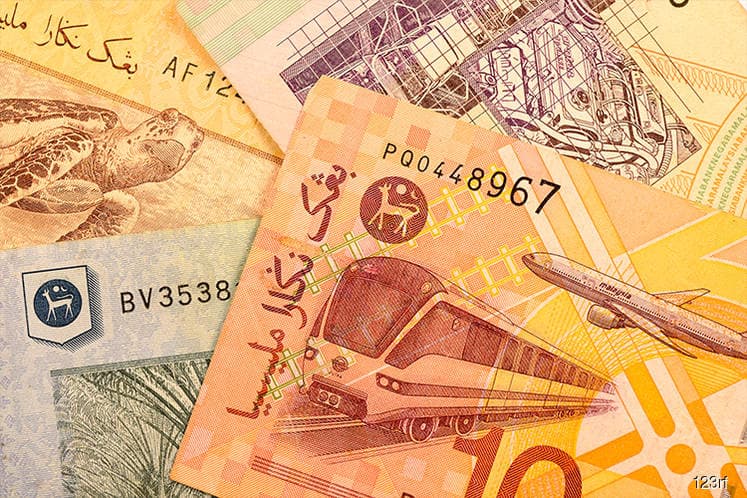
SINGAPORE (Sept 3): The ringgit may be ready for a rebound as foreign funds start to return to Malaysia, relieving pressure on the central bank to match rate increases by emerging-market peers.
The ringgit has fallen about 6 percent from its high in early April as policymakers stand pat while counterparts from Indonesia to India rush to support their currencies amid concerns of capital flight. A turning point may come as Malaysia’s real yields become increasingly attractive to investors. Headline inflation is expected to turn negative in the coming months, and remain low into 2019.
Overseas fund managers are piling into domestic bonds once again, purchasing $866 million in July after three straight months of outflows. At the same time technicals suggest the currency, on its worst monthly losing streak versus the greenback since 2015, is due for a change in fortune.
“We like Malaysian ringgit bonds, especially the long-end,” said Lawrence Lai, Asia rates and flow strategist at Standard Chartered Bank in Singapore. “Low-beta markets such as Malaysian ringgit and Thai baht debt are likely to see more support from foreign flows compared with flows into other high-yielders.”
Malaysia’s central bank is expected to show little urgency to raise interest rates when officials convene Wednesday amid a backdrop of moderating growth. In fact, the bulk of economists surveyed by Bloomberg now forecast Bank Negara Malaysia to remain on hold through the end of next year.
Still, Malaysia’s 10-year yield remains among the highest in Asia, ending Friday at about 4.05 percent. On an inflation-adjusted basis it looks even more attractive. CPI of 0.9 percent year-over-year in July is down from more than 5 percent a year-and-a-half ago, according to the nation’s statistics department.
Real yields in Thailand and South Korea are at roughly 1.25 percent and 0.8 percent, respectively.
Surging foreign-portfolio demand for local debt is coinciding with technicals signaling the ringgit’s selloff has gone too far. Dollar-ringgit slow stochastics, a momentum indicator, are in overbought territory, pointing to a period of consolidation ahead.
The pair is also struggling to breach resistance at 4.1004, the 38.2% Fibonacci retracement of the move lower between Jan. 4, 2017 and April 2, 2018. A decline back toward at least the currency pair’s 50-day moving average, currently at 4.0643, seems plausible short-term.
With equity outflows slowing to just $23 million in August from more than $3 billion over the three months prior, the ringgit may soon find itself with yet another source of support.
Below are key Asian economic data and events due next week:
* The U.S. is poised to put tariffs on an additional $200 billion in Chinese imports, and Beijing is expected to retaliate immediately, soon after the Trump administration’s public comment period expires this week
* Monday, Sept. 3: Australia retail sales, 2Q inventories and company operating profit, China Caixin manufacturing PMI, New Zealand 2Q terms of trade, Japan 2Q capital spending and Nikkei PMI manufacturing, Indonesia CPI, Thailand CPI and business
sentiment index
* Tuesday, Sept. 4: RBA rate decision and RBA Gov. Lowe speaks, Australia BoP current account balance, South Korea CPI and 2Q GDP
* Wednesday, Sept. 5: Bank Negara Malaysia rate decision and Malaysia trade balance, Australia 2Q GDP, Japan services PMI, China Caixin services PMI, Philippines CPI and unemployment rate
* Thursday, Sept. 6: Australia trade balance, BOJ’s Kataoka speaks, South Korea BoP current account balance
* Friday, Sept. 7: Australia home loans, Japan household spending and labor cash earnings, China foreign reserves, Malaysia industrial production